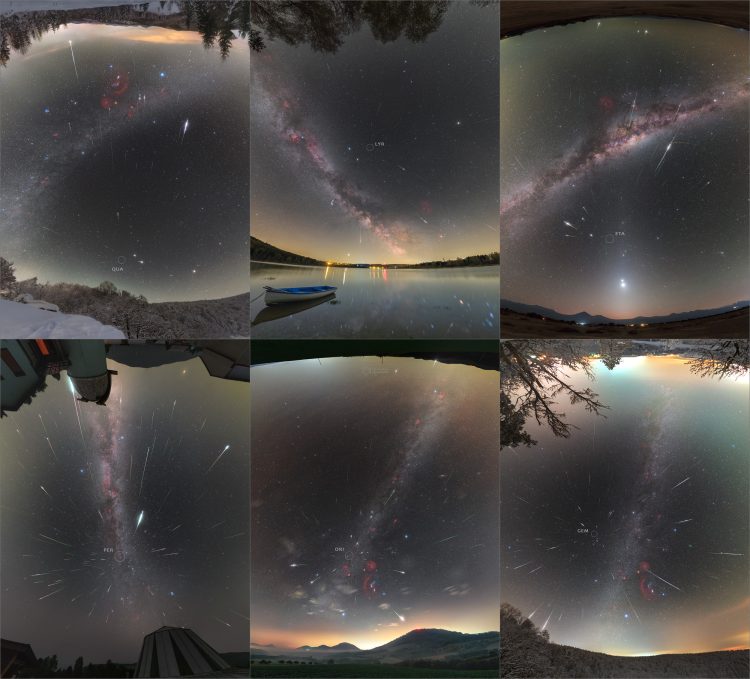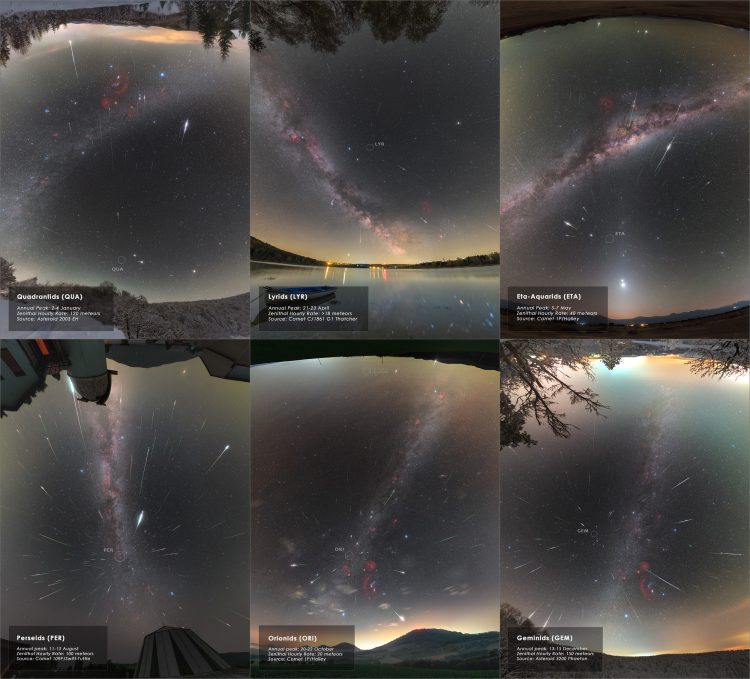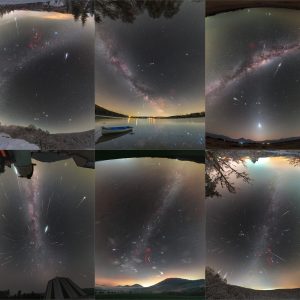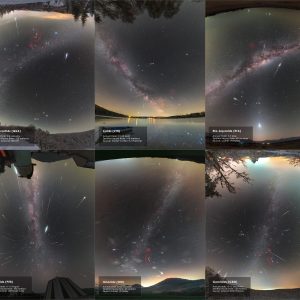The Meteor Showers Collection
Description
A collection of 6 images (all are photo composites of multiple exposures). From the photographer: “It took long 8 years but it was worth it. Here comes the longest and most time-consuming astrophotography project of my life, the complete collection of major annual meteor showers with a normal zenithal hourly rate of more than 18 meteors per hour. While most stargazers around the globe are familiar with August Perseids and December Geminids meteor showers, less known but still very nice showers can be seen throughout the whole year. Starting with January Quadrantids, the meteor shower of the “lost constellation”, the three of the year have the highest counts of meteors during their peaks (more than 100). Another three showers are not that active but are still truly notable. April Lyrids meteor shower is usually quiet with about 18 meteors per hour during maximum, but its activity can rise to a hundred, occasionally. In May and October, stargazers can enjoy two showers caused by the most famous comet of history, Halley’s comet. While Eta-Aqarids are much better observable from the southern hemisphere (normal ZHR up to 40 meteors), October Orionids can be seen practically everywhere in the world, best from the equator (normal ZHR up to 20 meteors). Quadrantids and Geminids are caused by fragments of asteroids, thus the meteors have different colors than the others caused by comets. As I used almost the same settings for taking all images ( same cameras, lenses, post-processing methods), it was easy to put them together in this collection. Move the slider on the image to see some information about the showers.”
Technical details: Canon 6D and Canon Ra, Samyang 24mm for foregrounds, Samyang 12mm for meteors. The collection was taken in 4 countries of the world (the Canary Islands – Spain, Czech Republic, Slovakia, and Chile); detailed tech information for each shower can be found here.”




comments (0)